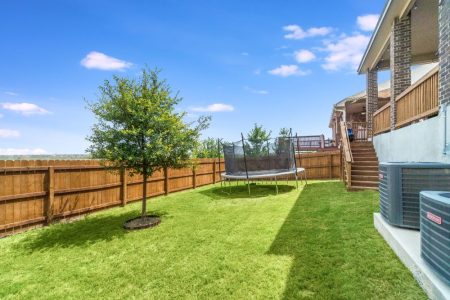Limestone is a durable natural stone that is used for flooring worldwide. This stone can be used in your kitchen, living room, bathroom, and even outdoors, making it a very versatile piece that can add a natural element to your home with no extra effort.
The main reason why people prefer limestone is because of the sophistication and elegance it provides to a space with a wide variety of muted tones and different styles to choose from.
Limestone can tolerate heavy foot traffic. History is evident of how limestone has been people’s first choice since the ancient era.
Even though it is extremely durable, just like every other material on the earth, it also needs a little care and maintenance to remain the same.
People fear that limestone outdoor flooring is hard to maintain and requires a lot of tedious maintenance tasks. While it’s not as complex as it seems, you need to keep in mind that you’re using the right products for your flooring, as carelessness can damage your flooring.
Things to keep in mind before cleaning limestone flooring
The first thing that you need to keep in mind before using any product on the limestone flooring is that all kinds of limestone, regardless of what colour or finish they come in, should not be cleaned with acidic products.
This is because limestone is most likely to get damaged because of acid and should only be cleaned using a pH-neutral detergent or cleaner.
Before buying any normal market cleaner, make sure to check its ingredient list, as daily homehold surface cleaners are acidic and can damage your limestone floor tiles.
Using acidic cleaners on your limestone flooring can also mess with the setting of the tiles and open the joints. Another result of using an acid-based cleaner on your flooring can be the discolouration or fading of limestone floor tiles. Therefore make sure to only use a pH-neutral detergent or cleaner to clean limestone floors.
To save some money, we can often cause a lifetime of damage which costs us more. The same is with the case of using DIY or homemade cleaners for limestone flooring.
Vinegar, lemon, and baking soda are the general ingredients we use for cleaning purposes. We often ignore them as they have a high amount of lactic acid, which also makes them acidic.
Keep your stone out of any intense heat as it can be the reason for causing flaking in your flooring. People also prefer using bleach because it is alkaline, but they do not know that it can also damage your limestone flooring as it is very harsh to be used on any natural stone.
Another type of cleaning experiment you should not consider doing on your limestone paving is ‘steam cleaning’ because it can cause serious damage to your tiles by damaging the sealer that binds your tiles together.
The best routine cleaning process for limestone floor tiles
A timely little care can take your limestone paving a long way and help you save money on the new installation of limestone.
Make sure to clean your limestone floor tiles regularly and follow a routine because it can become a mess if ignored. If dirt and grease build up on the surface of your tiles and make them more slippery and dirty, it will look unpleasant to the eyes and be dangerous, especially for children.
Regular cleaning is required, but once in a while, a deep clean can help you maintain the newness of the stone, especially in high traffic areas. While the ratio of the product is different and adjusted in the case of deep cleaning, the same cleaner can be used for this purpose. Make sure that you are using a non-acidic and gentle cleanser for your limestone floor tiles.
An easy guide to routine cleaning and deep cleaning
Routine cleaning:
Firstly, to make sure your floor is clean, either use a vacuum or sweep your floor.
Secondly, for a routine cleaning, take a small quantity of a pH-neutral detergent or cleaner and mix it with water. The ratio should be 1:10
Next, spread this solution all over your floor and cover all areas. You can also scrub the floor if you want to.
Utilize this solution on the floor using a cloth or a mop.
And lastly, remove the solution after cleaning the whole floor with a damp cloth.
Deep cleaning:
Just like we made sure during the routine cleaning that the floor was completely clean, in deep cleaning, and make sure the floor is properly free of any dirt.
Now, as we are deep cleaning the tiles mix a part of cleaner into only 3 parts of water which makes the ratio 1:3
Let it sit on the floor for 5-10 minutes and do its job and keep the floor wet. You can use the remaining solution for this purpose.
Lastly, rinse the floor with clean water and let it dry.
Don’t forget about your outdoor limestone flooring
People often opt for the same paving slabs outdoors and indoors to create a seamless flow in the home and maintain a strong aesthetic appeal. While people often tend to ignore their outdoor flooring, To maintain the tiles both indoors and outdoors, it is important to pay equal attention to your outdoor tiles.
You can use the same cleaner that you use to clean your indoor tiles on your outdoor flooring and to avoid stains, algae, and other issues, you can also invest in a good quality stain remover.
How to clean persistent stains on limestone floor tiles?
Sometimes stains can be too stubborn and can be hard to deal with. In such cases, you can try deep cleansing your floor, and if that doesn’t work out well, it’s time for you to pay special attention to it.
The market is a hub of various solutions that can be used to remove stubborn stains from your limestone flooring without damaging the tiles. Such solutions can remove grease, oil, wax, and much more.
But make sure that the product you’re choosing for your tiles is safe for limestone and is not acidic because a little carelessness can result in damaged sealing or surface of your limestone tiles.





